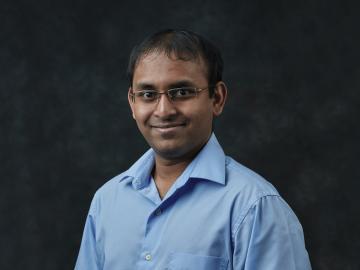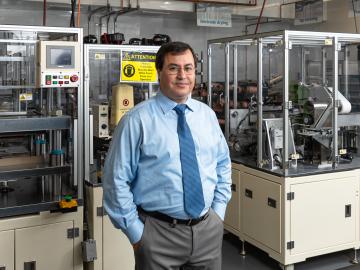
Filter News
Area of Research
- Biology and Environment (8)
- Computer Science (2)
- Energy Science (28)
- Energy Sciences (1)
- Fusion and Fission (2)
- Fusion Energy (4)
- Isotopes (3)
- Materials (25)
- Materials for Computing (4)
- National Security (5)
- Neutron Science (9)
- Nuclear Science and Technology (10)
- Nuclear Systems Modeling, Simulation and Validation (1)
- Quantum information Science (1)
- Supercomputing (29)
News Type
News Topics
- (-) Advanced Reactors (13)
- (-) Composites (1)
- (-) Computer Science (38)
- (-) Cybersecurity (3)
- (-) Energy Storage (21)
- (-) Isotopes (8)
- (-) Nanotechnology (16)
- (-) Space Exploration (2)
- 3-D Printing/Advanced Manufacturing (26)
- Artificial Intelligence (8)
- Big Data (9)
- Bioenergy (13)
- Biology (5)
- Biomedical (22)
- Biotechnology (2)
- Buildings (1)
- Chemical Sciences (5)
- Clean Water (2)
- Coronavirus (25)
- Critical Materials (2)
- Environment (24)
- Exascale Computing (3)
- Frontier (1)
- Fusion (13)
- Grid (7)
- High-Performance Computing (3)
- Machine Learning (8)
- Materials (2)
- Materials Science (36)
- Mathematics (2)
- Mercury (1)
- Microscopy (8)
- Molten Salt (2)
- National Security (2)
- Neutron Science (33)
- Nuclear Energy (30)
- Physics (13)
- Polymers (7)
- Quantum Science (12)
- Security (3)
- Summit (17)
- Transportation (14)
Media Contacts

In the 1960s, Oak Ridge National Laboratory's four-year Molten Salt Reactor Experiment tested the viability of liquid fuel reactors for commercial power generation. Results from that historic experiment recently became the basis for the first-ever molten salt reactor benchmark.

Suman Debnath, a researcher at ORNL, has been elevated to the grade of senior member of the Institute of Electrical and Electronics Engineers (IEEE).

In the early 2000s, high-performance computing experts repurposed GPUs — common video game console components used to speed up image rendering and other time-consuming tasks

Researchers at the Department of Energy’s Oak Ridge National Laboratory (ORNL) in late February demonstrated a 20-kilowatt bi-directional wireless charging system installed on a UPS medium-duty, plug-in hybrid electric delivery truck.

In the race to identify solutions to the COVID-19 pandemic, researchers at the Department of Energy’s Oak Ridge National Laboratory are joining the fight by applying expertise in computational science, advanced manufacturing, data science and neutron science.

Ilias Belharouak is leading ORNL’s research efforts in investigating new materials for solid-state batteries, which can double the charging capacity of lithium-ion batteries, commonly used today for electronic devices such as cell phones.

A software package, 10 years in the making, that can predict the behavior of nuclear reactors’ cores with stunning accuracy has been licensed commercially for the first time.

Researchers at the Department of Energy’s Oak Ridge National Laboratory have used Summit, the world’s most powerful and smartest supercomputer, to identify 77 small-molecule drug compounds that might warrant further study in the fight

We have a data problem. Humanity is now generating more data than it can handle; more sensors, smartphones, and devices of all types are coming online every day and contributing to the ever-growing global dataset.

As the second-leading cause of death in the United States, cancer is a public health crisis that afflicts nearly one in two people during their lifetime.


